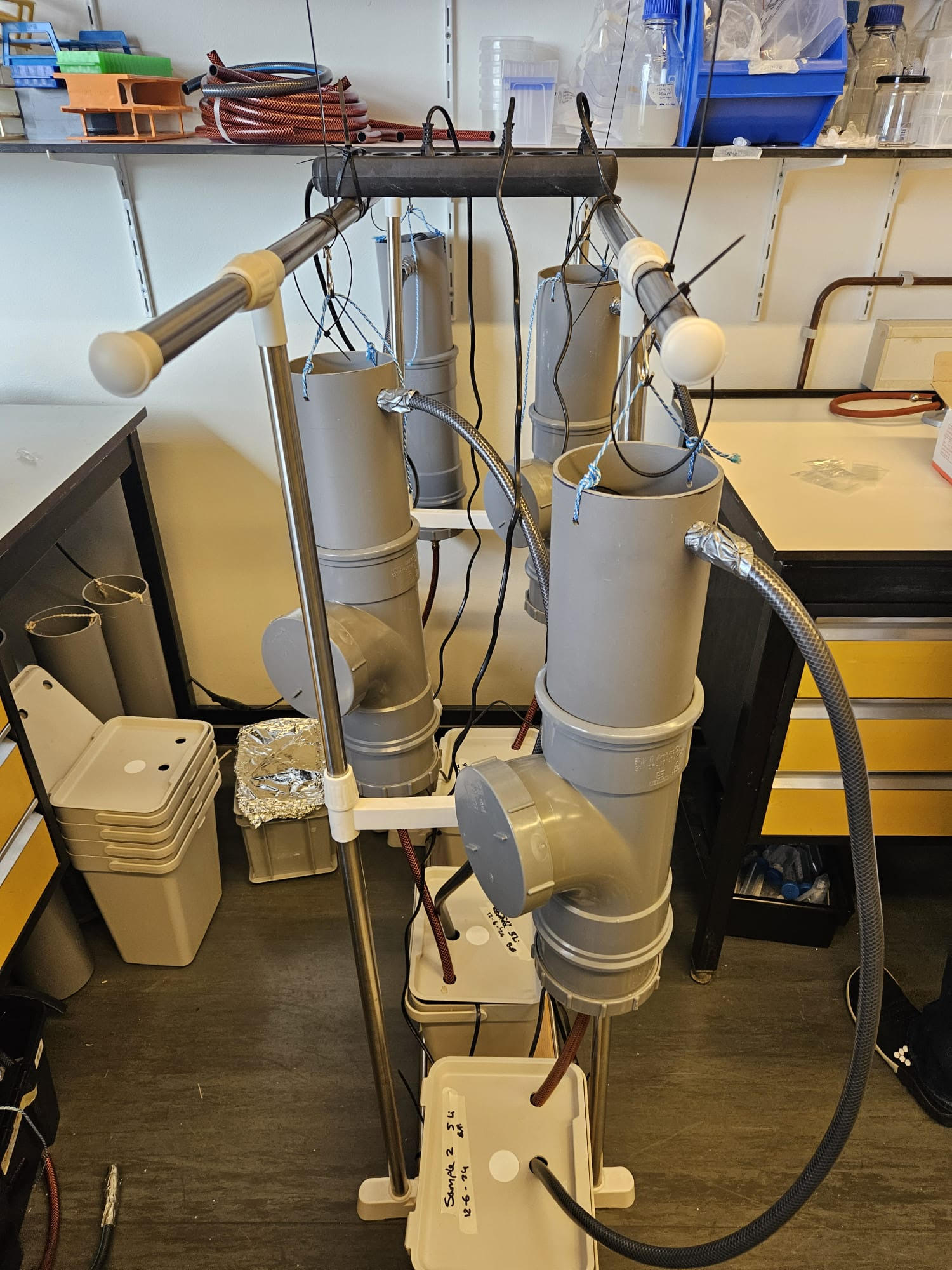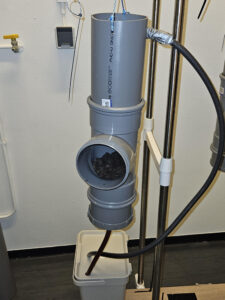
This week: Contribution to a helathy society
On March 28th Brigit van Brenken and Han Wösten received an innovationvoucher by Utrecht Holdings.
We asked them how things are going.
1. Short summary of the invention and voucher.
Our project focuses on developing a filtration system to remove harmful PFAS (Per- and polyfluoroalkyl substances) from water. We’ve been testing different prototypes in both a lab environment and a workshop. The system works by running water through a filter bed, which includes champost that help break down or capture these contaminants. So far, we’ve successfully removed around 80–85% of PFAS in our tests, although some other compounds are proving more challenging. The voucher we received has been instrumental in advancing our research, allowing us to build prototypes and conduct more extensive testing.
2. Can you provide an update on where you are now? Are there any new results?
We’re almost there. We’ve set up several toxicity tests, including an AMES genetic toxicity test and a bioluminescence test, which is already complete. We’re now focused on simultaneous testing of multiple samples. One challenge remains with a test involving daphnia fish, but we’re addressing it. We’ve built two different prototypes. In our latest trials, we filtered up to 5 liters, with the potential to scale up to 10 liters. For some substances, we achieved 100% removal in 10 hours, but others were still present in a concentration higher than expected—likely due to shorter contact times. We’re now adjusting the flow rate to optimize the filtration process. Our aim is to scale to 1,000 liters in the near future.
3. How has the voucher contributed to the next steps?
The voucher has been invaluable. It allowed us to keep pushing forward with the research, especially when it came to building and testing the prototypes (see photo above). Without it, we wouldn’t have been able to reach this stage of development. The support has really enabled us to refine our approach and get closer to industrial-scale testing.
4. How did Utrecht Holdings (the Business Developer) help you?
Utrecht Holdings played a big role in this early stage. Their support made it possible to continue the research without interruptions. We’re very grateful because, without their help, we wouldn’t have been able to build the prototypes or run the large-scale tests that we’re working on now.

(prototype)
5. Where do you want to be in two years?
In two years, I hope we will have completed the Biotech Booster program and launched a company to bring this technology to market. Our goal is to have scaled up the process to industrial levels, allowing us to tackle PFAS and other contaminations on a much larger scale.